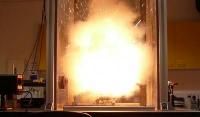C–H functionalisation at room temperature
Advertisement
British chemists have moved a step closer to conquering a significant synthetic challenge by developing a C–H bond functionalisation reaction that can generate a diversity of molecular frameworks at room temperature.
A broad range of C–H transformations can be catalysed by a variety of transition metals at high temperatures. But Matthew Gaunt’s group at the University of Cambridge aims to develop a synthetic toolbox comprising mild metal-catalysed C–H functionalisation reactions to make it easier to make complex molecules.
They investigated the reactions of beta-arylethylamine, a motif commonly found in medicines and natural products. Attempts to catalytically transform the phenylalanine ethyl ester had previously failed but when the group introduced an aryl group onto the amine system, they were able to carbonylate, arylate and aminate the C–H bond. The reaction works on a variety of substrates and is tolerant of stereogenic centres and complex functionality.
Original publication: Benjamin Haffemayer, Moises Gulias and Matthew J. Gaunt, Chemical Science, 2010
Organizations
Other news from the department science

Get the chemical industry in your inbox
By submitting this form you agree that LUMITOS AG will send you the newsletter(s) selected above by email. Your data will not be passed on to third parties. Your data will be stored and processed in accordance with our data protection regulations. LUMITOS may contact you by email for the purpose of advertising or market and opinion surveys. You can revoke your consent at any time without giving reasons to LUMITOS AG, Ernst-Augustin-Str. 2, 12489 Berlin, Germany or by e-mail at revoke@lumitos.com with effect for the future. In addition, each email contains a link to unsubscribe from the corresponding newsletter.























































